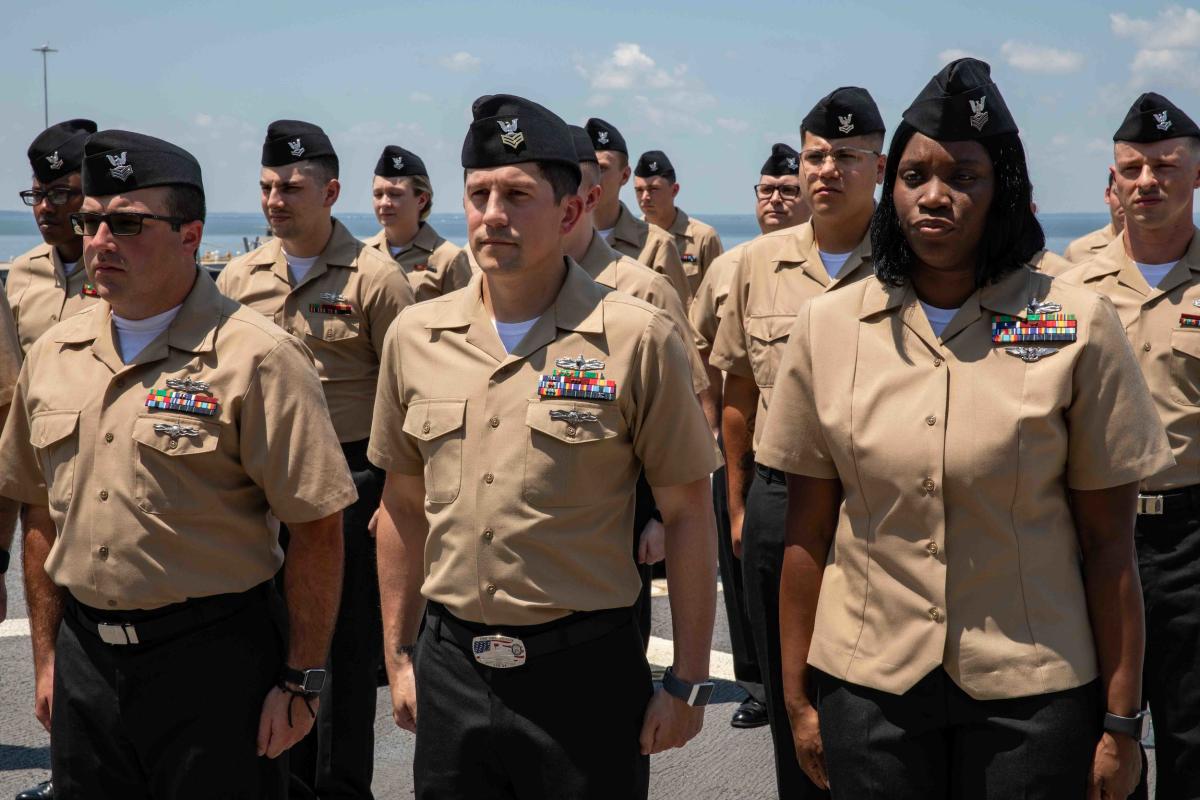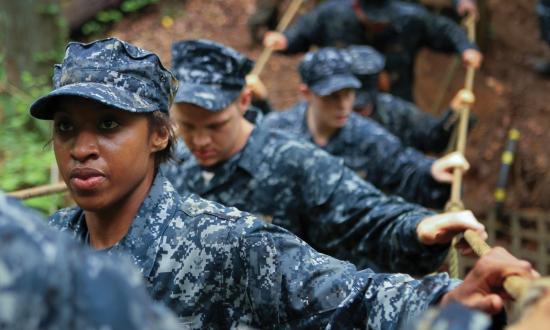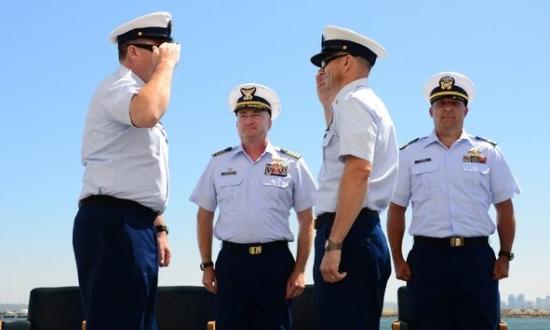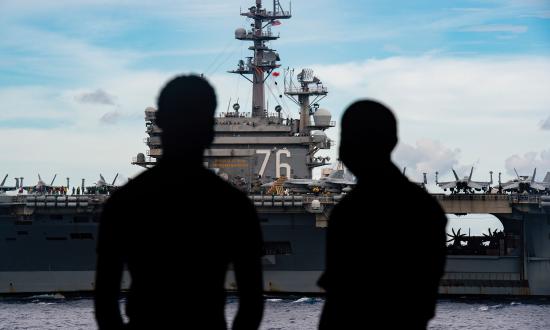We can’t be under any illusions about the fact that racism is alive and well in our country. And I can’t be under any illusions that we don’t have it in our Navy.
– Chief of Naval Operations Admiral Michael Gilday, 3 June 2020
The Navy has a racism problem.
A year ago, such a statement would be far more provocative than it is today. The crystalizing moment of George Floyd’s death last year, however, revealed longstanding truths about the racism that remains in our society. Collectively watching a Black man treated as something less than human exposed every American to the “too many things we do not wish to know about ourselves” that writer James Baldwin described in The Fire Next Time.
These truths include the deficit between our words and our actions when we espouse that “all men are created equal” and “endowed with certain unalienable rights” but continue to accept, subconsciously or not, the wide disparity in how Black and other minorities are treated in their interactions with the justice system; in their access to quality housing, education, and medical care; and ultimately in their share of the abundant fruits our great American system produces. These are hard and unsettling truths many could not or did not want to see, now made undeniable.
In its reaction to the death of George Floyd, the Navy has had to face the deficit between its own ideals and its reality. Despite many pioneering and rightfully laudable advances in racial equality and a genuine desire to be meritocratic, it remains clear the Navy continues to be weighed down by the effects of systemic racism. Many of these effects have been expressed courageously in the pages of Proceedings. The need for Black officers to “wear masks” and “carry burdens” and the fact that White officers inequitably “profit from the status quo” are all, as Baldwin would believe, truths we need to accept before we can hope to overcome them.
The Navy’s early attempts to own these truths are good first steps. But they are only first steps. The fact remains that the Navy has always had a racism problem, and, as our history demonstrates, steps taken to address it are easily thwarted by complacency or bureaucratic resistance. While the impetus to make substantive change is present, and the emotional moment of today is focusing our collective mind, Navy leaders urgently need to talk openly about these truths, plan how how to address them, and, most important, start acting. Otherwise, the Navy will simply fall back on old habits, and initiatives such as Task Force One Navy will either fail or disappear into bureaucratic oblivion like each preceding effort.
All Navy officers, but especially White officers, owe this effort a debt. A debt stemming from decades of looking the other way, being oblivious, and making excuses. It is well past time to reconcile the deficit between our ideals and our reality—between what we say and what we do. This debt needs to be paid. It is what we owe.
An Honest Accounting
The first thing we owe is an honest accounting of the racial inequity in today’s Navy. Too many in the wardroom are quick to question whether racism even exists anymore.1 They argue a color-blind, meritocratic Navy leaves every door of opportunity open to Black officers. The Navy has had Black four-star admirals and even a Black Commander-in-Chief. How can racism still exist, they ask, when there are so many examples of successful Black officers?
But if that is correct, why does the Navy continually get such racially disparate outcomes in its officer demographics?
In 2020, Black officers made up 7.5 percent of all ensigns in the Navy, yet only 2.8 percent of all flag officers. White officers make up 75 percent of all ensigns and 90 percent of flag officers. Over the course of an average career, Black naval officers lose rank and positions of power while their White colleagues gain and improve on their already substantial position. As the Task Force One Navy final report states, “Our officer corps remains overwhelmingly white and male and . . . is not representative of the U.S. today [emphasis added].”
In addressing this disparity there are only two approaches. The first is passive. It argues the Navy’s policies and performance to date are sufficiently equitable. The Navy is objectively meritocratic and color blind, and any racial imbalance is largely explained by forces out of its control. Over time, these imbalances will right themselves. This approach further argues it is not the Navy’s role to be a social experiment in correcting the inequities present in the larger society it serves. Doing anything more risks weakening the Navy by sowing confusion, undermining morale, and unnecessarily distracting the service from its central warfighting mission.
The other approach is active. It argues there is something systemically racist occurring in how the Navy recruits, retains, and promotes Black officers. The disparity in demographics indicates the Black officers who do make it into the top ranks do so despite systemic racism, not because the service is free of it. This approach stresses that the reality Black Navy officers face is not a new one. It goes back at least as far as 1948, when President Harry S. Truman signed Executive Order 9981 ending segregation within the armed services, if not all the way to the founding of the Continental Navy. Doing nothing more means institutional acceptance of the Black officer’s second-class status.
In determining the best approach between the two, the continuing history stressed in the latter makes the most convincing case. After Truman’s executive order, it took 13 years for the first Black officer to take command of a warship and another ten years before the first Black admiral.2 It bears mentioning these “firsts” were hardly followed by a crowd. It was another three years before the second Black admiral was selected, four more years until the first Black commanding officer of an aircraft carrier, and it was not until 1996 when the Navy would finally promote a Black officer to four-star admiral.3
Given the Navy currently does not have a Black naval officer above the rank of two-star and has never had a Black Chief of Naval Operations (more than 70 years after Executive Order 9981), and after decades of Black officer underrepresentation in senior ranks, one can only conclude that “history,” to borrow the words of Stephen Dedalus from James Joyce’s Ulysses, “is a nightmare from which we are still trying to awake.” When it comes to racism in the Navy and the decades of attempts to reverse it, the Navy needs to recognize the hard truth that it has much work to do. This is not a time for complacency or adhering to the status quo. It is time for action.
Adherents of the status quo approach, willfully or not, are repackaging similar lines used over and again throughout history to prevent the complete integration of minorities into the service. At each historical juncture, these arguments have proved false. The Navy did not fall apart with integration. It did not weaken with each Black officer commissioned. And performance did not sink with each Black officer made admiral. In fact, the opposite occurred. As it became more reflective of the larger society it served, the Navy only grew stronger.
This juncture in our history is no different. To ask Black officers to wait or make do with what they have is convenient for those in power. They can wait all day. Black officers are on the outside looking in. Is this the status quo the Navy wants to maintain?
There is no middle ground between these approaches to the question of racial disparity in the Navy’s demographics. An honest accounting of today’s reality and the history that led to it must drive Navy leaders to stand on difficult, but moral, ground, acknowledging that the service has a systemic racism problem that requires sufficient attention and resources be paid to rectify.
Be Curious
It is one thing to claim action is needed. It is an entirely different thing to know which actions to take. I am not prescribing which actions to take, but there is one characteristic essential to ensuring that actions are substantive and positive—curiosity.
More damning than its officer demographics has been the Navy’s utter lack of curiosity about why they remain so persistent. Until it contracted with the Center for Naval Analyses late last year to analyze the challenge of minorities shifting out of the core warfighting communities at a higher rate than their White peers, the Navy had never sought or conducted a comprehensive study of how Black, female, and other minority officers progress through their careers. Albeit late, this is the type of question the Navy needs to start asking more, because, as Irish poet James Stephens said, “We get wise by asking questions, and even if these are not answered we get wise, for a well-packed question carries its answer on its back as a snail carries its shell.”
Other curiosity-provoked questions the Navy ought to start asking:
- Why are conference rooms across the Navy persistently full of White men?
- How does the Navy do such an excellent job recruiting, retaining, and advancing its Black enlisted?
- How can the Navy ascend more Black enlisted into the officer ranks?
- Does being more color blind lead to greater equity?
- How much bias goes into selecting officers for career-enhancing projects, roles, and assignments?
- How susceptible to bias is our current evaluation system?
- What are the best methods to reduce or eliminate bias in personnel decision-making?
The Fierce Urgency of Now
The Task Force One Navy recommendations have great potential, but, as author Margaret Atwood would say, “Potential has a shelf life.” None of them comes with a guarantee of success. More will probably need to be done. Mistakes will almost certainly be made. Fear of mistakes ought not be a deterrent, however, provided that leaders are willing to face constructive criticism, accept failure, be curious as to why they failed, and work to improve. The way the Navy has approached racial inequity to this point has not gotten it any closer to its goals. The status quo cannot and should not be held.
The final thing officers owe is to bear witness to the Navy’s efforts and be willing to both receive and give constructive criticism on how well the service is doing. Navy personnel must watch and hold leaders to account for getting it right this time. They owe it, not to themselves, but to the next generation of Navy officers. They must embrace Baldwin’s idea: “One must negotiate this passage as nobly as possible, for the sake of those who are coming after us.” It is incumbent to advocate for change now, for the generation replacing today’s officers.
One thing is certain. It will take time. This effort will not be completed in a day. But because it cannot be fixed in a day does not mean it should be put off another day. In a 1967 speech, Martin Luther King Jr. argued, “We are now faced with the fact that tomorrow is today. We are confronted with the fierce urgency of now. In this unfolding conundrum of life and history, there ‘is’ such a thing as being too late. This is no time for apathy or complacency. This is a time for vigorous and positive action.” What was necessary for the country to hear then is something the Navy needs to hear today.
On a more personal note, I, and certainly all those who took the time and labor to write, love our Navy. We would not have bothered to write if otherwise. In a way I do not think any other profession could ever do, the Navy has made me into the person I am proud to be today. It has tremendous capital and capacity to become the inclusive organization it professes to be. The Navy is, to borrow once more from the penetrating intellect of James Baldwin, “capable of bearing a great burden, once we discover that the burden is reality and arrive where reality is.” It is because of that deep and abiding love for and its capacity for positive change that I reserve the right to voice my criticisms openly. To do otherwise would not do our service the justice it deserves. It is what I owe.
- A quick glance in the comments here or in any of the other articles cited proves the point.
- These two landmark events honor the same individual, Vice Admiral Samuel Lee Gravely Jr., who served from 1942 until 1980.Rear Admiral Gerald Eustis Thomas in 1974 (served 1951 to 1981); Rear Admiral Lawrence Chambers in 1975 (served 1948 to 1984); Admiral J. Paul Reason (served from 1965 to 1999).






